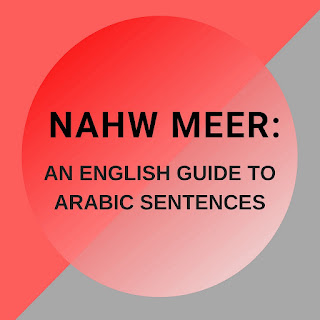3.2/3.3 - Four Properties Required For a Noun/ Property 1 Flexibility
Section 3.2 – Four Properties Required to Define a Noun اِسْمٌ
As in the English language, simply put, a Noun is used to define a name, a place, or a thing. In Arabic, to define a Noun and be able to use it, the following four properties are required:
Property 1. Vowel إِعْرَابٌ (e’raa-bun) of the Noun has to be known. This specifies whether a Noun is flexible مُعْرَبٌ (mu-ra-bun) or inflexible مَبْنِيٌّ (mab-niyyun) and defines its position in a sentence as to whether it is a subject, object, an adjective, etc.
For example, a name like Hamid is flexible, because it has three forms حامِدٌ، حامِدًا، حَامِدٍ for Nominative (رَفْعٌ), Accusative (نَصْبٌ) and Genitive state (جَرٌّ). Where as the name Musa is the same مُوْسٰى ,مُوْسٰى ,مُوْسٰى in all three states.We will cover later which nouns are flexible and which are not and what makes them flexible.
Property 2. Its capacity وُسْعَتٌ (wus-atun) needs to be known. This means it has to be defined whether it is a definite Noun مَعْرِفَةٌ (maa’ri-fa-tun) or an indefinite Noun نَكِرَةٌ (naki-ra-tun).
A definite Noun points to a specific name, place, or a thing whereas an indefinite Noun points to a common name, place, or thing. For example, “Zaid” (Zaid-un) زَيْدٌ would be the name of a specific man, whereas “a man” رَجُلٌ raju-lun or ra-jul would be any man. Also, “a man” can be made into a definite Noun by saying “the man”. This is done in Arabic by adding alphabets ا alif and ل lam, as inاَلرَّجُلُ ar-raju-lu. Note that raju-lun became ar-raju-lu. This is because when (ا) and (ل) are added in front of a Noun, the harakah on the last alphabet is lightened/reduced. Here since tanween at the end is a double dammah, one of the dammahs was dropped. Note that alphabet (ر) is a sun alphabet, so (ل) in front is not pronounced
Property 3. Its gender جِنْسٌ (jin-sun). has to be known. This means, one has to know whether it is a Masculine مُذَكَّرٌ (mu-dhak-ka-run) or Feminine مُوْنَّثٌ (mu-an-nath-un) gender.
Property 4. Its quantity عَدَدٌ (ada-dun). has to be known. This means whether it is a single مُفْرَدٌ (muf-ra-du). a dual مُثَنّٰى mu-than-na or a plural جمْعٌ (jam-aa). Unlike English, Arabic has a separate way of counting and writing a quantity of two, and it is not part of a plural. Plural جمْعٌ jam-un is always more than two. Dual مُثَنّٰى mu-than-naa is a quantity of two only and singleمُفْرَدٌ is a quantity of one only.
In the next sections, we will define each one of these four properties of Noun in detail.
Section 3.3 - Property 1 Flexibility إِعْرَابٌ (e’raa-bun) of a Noun
As mentioned before, a Noun can only have three states: Nominative رَفْعٌ(raf-'un) Accusative نَصْبٌ (nas-bun) and Genitive (jarr-un) جَرٌّ. Also, the normal state of a Noun is always Nominative, unless some reason exists for it to go into Accusative نَصْبٌ (nas-bun) or genitive جَرٌّ ( jarrun ). The reason could be either the position of the Noun in a sentence or compound or an active element (Noun, Verb, or a Particle) which can cause it to go into a different state.
Flexible of a Noun is further divided into two categories. These are Triptote مُنْصَرِفٌ (Mun-sa-ri-fun) and Diptote غَيْرُ مُنْصَرِفٍ (Ghairu mun-sa-ri-fun).
A. Triptote مُنْصَرِفٌ mun-sa-ri-fun Flexible Noun: This is defined as a Noun that has three different forms in the three states of Nominative رَفْعٌ (raf-'un). Accusative نَصْبٌ (nas-bun) and Genitive. For example, the name Zaid is زَيْدٌ (Zai-dun) in Nominative رَفْعٌ (raf-'un), زَيْدًا (Zai-dan) in Accusative نَصْبٌ (nas-bun) and زَيْدٍ (Zai-din) in Genitive.Again, all three are pronounced as Zaid when they occur at the end of the sentence. Also note that the tanween in Fathah form (for accusative here) when added at the end, then an alif is added but not pronounced. Approximately 75% of the Arabic Nouns are Triptote Flexible Nouns.
B. Diptote غَيْرُ مُنْصَرِفٍ ghairumun-sa-rifin Flexible Noun: This is defined as a Noun that has two different forms, one for the Nominative رَفْعٌ (raf-'un) and one for both the Accusative نَصْبٌ (nas-bun) and Genitive (جَرٌّ). Also, a Diptote does not accept a tanween ( ً / ٍ / ُ ) and is always comes with a single harakah. For example, the name Zainab is زَيْنَبُ (Zai-na-bu) in Nominative رَفْعٌ (raf-un) and زَيْنَبَ (Zai-na-ba) for Accusative نَصْبٌ (nas-bun) and زَيْنَبَ (Zai-na-ba) for Nominative.
Approximately 13% of the Arabic Nouns are Diptotes.
A non-flexible Noun (مَبْنِي) is a noun that does not change its form in any of three states. For example, the word هٰذَا haa-dha is the same in all three states. About 2% of the Nouns in Arabic are non-flexible.
This is the most complex part of the Arabic grammar and will be treated in more detail later, as appropriate.
***





Comments